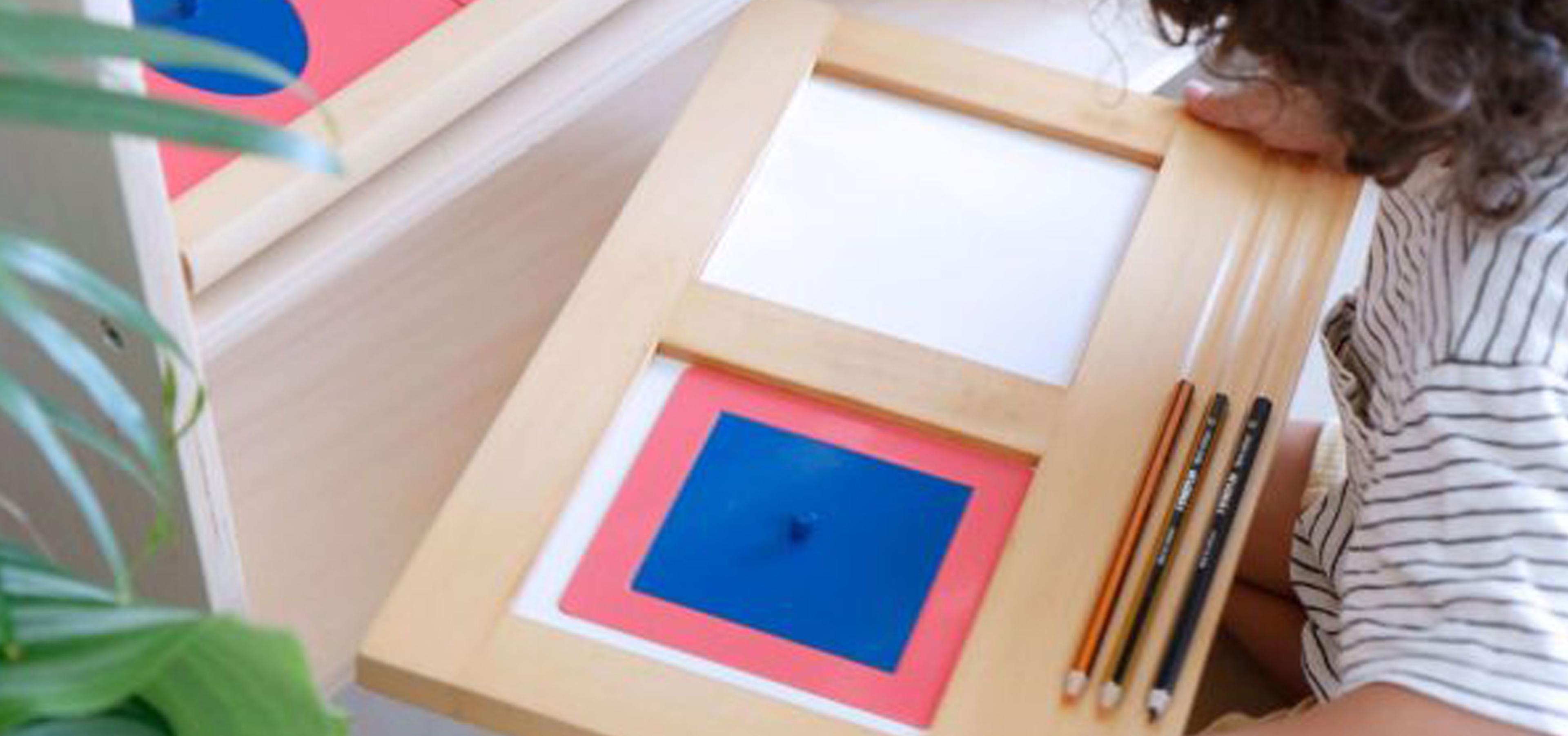As part of the Montessori curriculum, children are provided with a range of materials that support the development of fine motor skills, hand-eye coordination, and spatial awareness. One such material is the metal insets, a set of geometric shapes that can be used for a variety of activities.
Components of the Set
The metal insets consist of ten geometric shapes, including squares, circles, triangles, rectangles, and ovals. Each shape is mounted on a wooden frame, with a pink frame for the shapes with curved edges, and a blue metal shape cut out with a knob in the centre for the shapes with straight edges. The knobs on the shapes provide a point of reference for children as they trace the shapes with a pencil or crayon.
Benefits of Metal Insets
- Fine motor skills: Using the insets requires children to use their hands and fingers in a precise and controlled way, helping to develop fine motor skills.
- Hand-eye coordination: Tracing the shapes with a pencil or crayon requires children to coordinate their hand movements with their visual perception, promoting hand-eye coordination.
- Spatial awareness: The shapes and frames provide a clear visual representation of geometric concepts, helping children to develop spatial awareness and an understanding of shapes and their relationships.

Using Metal Insets in the Classroom
Metal insets are used in a variety of ways in the Montessori classroom, depending on the age and abilities of the children.
Here are a few examples:
- Tracing: Children can trace the shapes with a pencil or crayon, developing fine motor skills, hand-eye coordination, and an understanding of shape and form.
- Combining shapes: Children can combine the shapes to create more complex shapes and patterns, promoting creativity and problem-solving skills.
- Writing and drawing: Children can use the shapes and frames as guides for writing and drawing, helping to develop pre-writing and pre-drawing skills.
In conclusion, the metal insets are a valuable tool in the Montessori classroom, supporting the development of fine motor skills, hand-eye coordination, and spatial awareness. By using the shapes in a variety of ways, children can engage in learning and creative activities that promote their overall development and learning.

